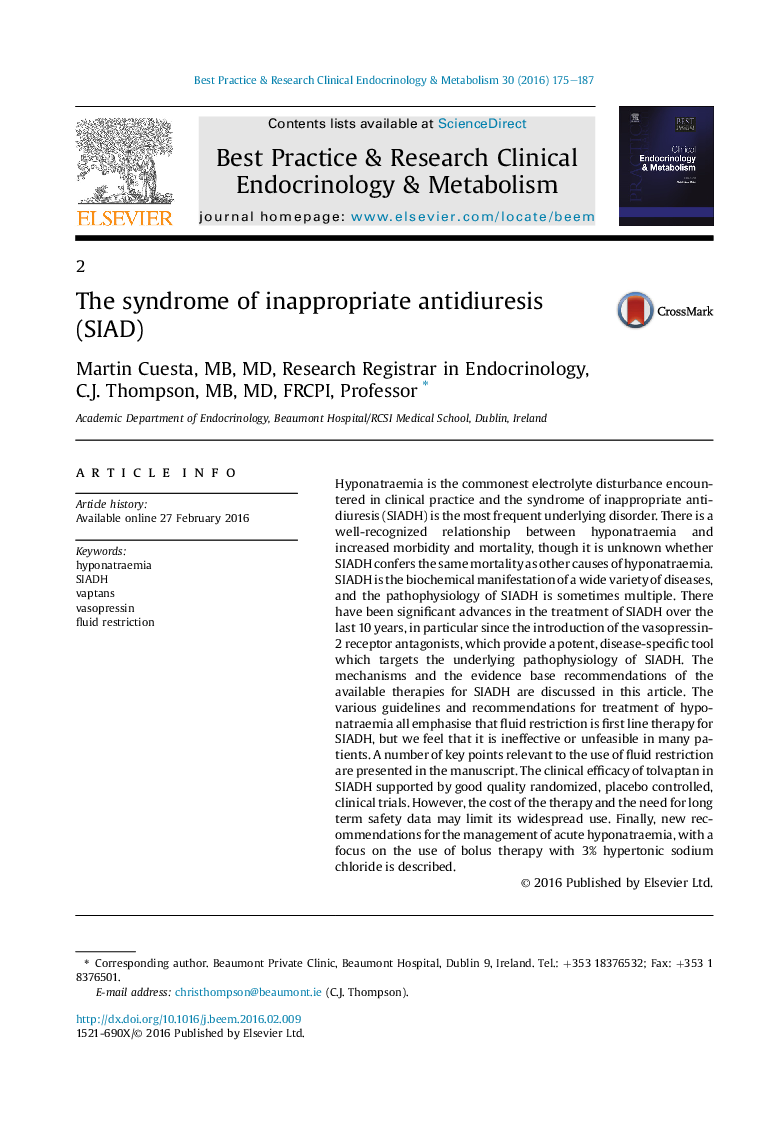| کد مقاله | کد نشریه | سال انتشار | مقاله انگلیسی | نسخه تمام متن |
|---|---|---|---|---|
| 2791480 | 1154950 | 2016 | 13 صفحه PDF | دانلود رایگان |

Hyponatraemia is the commonest electrolyte disturbance encountered in clinical practice and the syndrome of inappropriate antidiuresis (SIADH) is the most frequent underlying disorder. There is a well-recognized relationship between hyponatraemia and increased morbidity and mortality, though it is unknown whether SIADH confers the same mortality as other causes of hyponatraemia. SIADH is the biochemical manifestation of a wide variety of diseases, and the pathophysiology of SIADH is sometimes multiple. There have been significant advances in the treatment of SIADH over the last 10 years, in particular since the introduction of the vasopressin-2 receptor antagonists, which provide a potent, disease-specific tool which targets the underlying pathophysiology of SIADH. The mechanisms and the evidence base recommendations of the available therapies for SIADH are discussed in this article. The various guidelines and recommendations for treatment of hyponatraemia all emphasise that fluid restriction is first line therapy for SIADH, but we feel that it is ineffective or unfeasible in many patients. A number of key points relevant to the use of fluid restriction are presented in the manuscript. The clinical efficacy of tolvaptan in SIADH supported by good quality randomized, placebo controlled, clinical trials. However, the cost of the therapy and the need for long term safety data may limit its widespread use. Finally, new recommendations for the management of acute hyponatraemia, with a focus on the use of bolus therapy with 3% hypertonic sodium chloride is described.
Journal: Best Practice & Research Clinical Endocrinology & Metabolism - Volume 30, Issue 2, March 2016, Pages 175–187